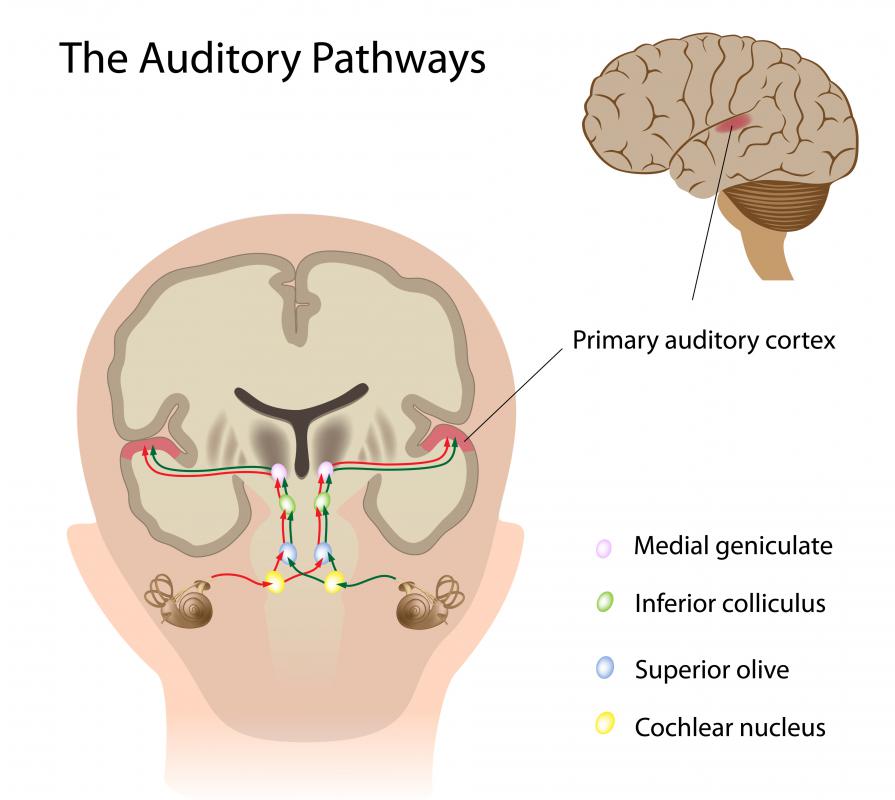At WiseGEEK, we're committed to delivering accurate, trustworthy information. Our expert-authored content is rigorously fact-checked and sourced from credible authorities. Discover how we uphold the highest standards in providing you with reliable knowledge.
What Is the Lateral Lemniscus?
The lateral lemniscus is a pathway of nerve cell structures called axons in the brain stem. These axons travel from the cochlear nucleus, through which the auditory nerve travels from the inner ear, to the midbrain. Three different cell groups typically make up these tracts and lie on each side, including the intermediate, ventral, and dorsal nuclei. Nerve fibers in each of these lead to a structure in the mid brain called the inferior colliculus, and also return to the lateral lemniscus. The function is generally to relay sound information from the cochlear nuclei to other parts of the brain stem.
Structural components of the brain that are typically involved in the timing of sound, like the superior olivary complex, are located near the lateral lemniscus. The axon tract is generally situated at a crossover point of the cochlear nuclei, and a structure called the reticular formation that processes outside stimuli and maintains sleep, motor, and habitual response patterns. Nerve fibers typically carry the information to the inferior colliculus, which connects nerves that process vertically and horizontally oriented sounds. Certain reflexes and possibly pitch detection can be managed in this area.

The intermediate nucleus is one of the main parts of the lateral lemniscus. Neural activity is typically regular and the cells often respond to stimuli in specific timing patterns. Another part is the dorsal nucleus, which activates mostly in response to sounds from both ears, while each ventral nucleus responds to sounds from the ear on the opposite side. The timing of sounds and recognition of tones may be controlled here.

Each of these nuclei can be differentiated by the input and output of nerve fibers, which go to different parts of the brain. Various interconnections enabled by the lateral lemniscus can allow humans to respond to sounds. Behavioral patterns are often influenced by the physiological condition of nearby structures as well.
Information on amplitude, pitch, and location of sounds is relayed through the fibers, so the lateral lemniscus may help people to localize sound. The exact function of the area has yet to be determined, as of 2010, although researchers have found that time response is better than other cells nearby. Reflexes triggered by sudden sounds might be controlled here as well. The lateral lemniscus is generally a relay for nerve signals, so damage to it can cause problems with hearing, coordination, and behavior.
AS FEATURED ON:
AS FEATURED ON:












Discuss this Article
Post your comments